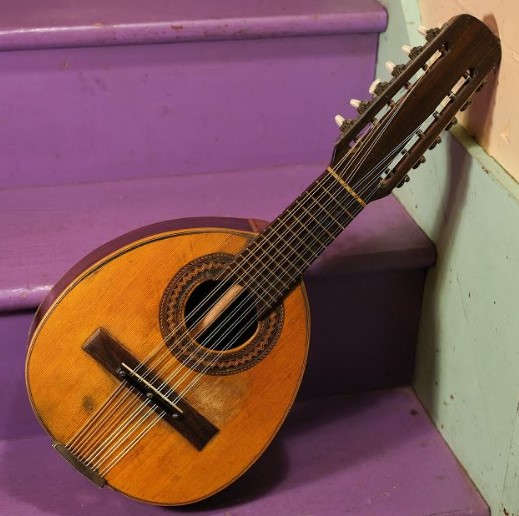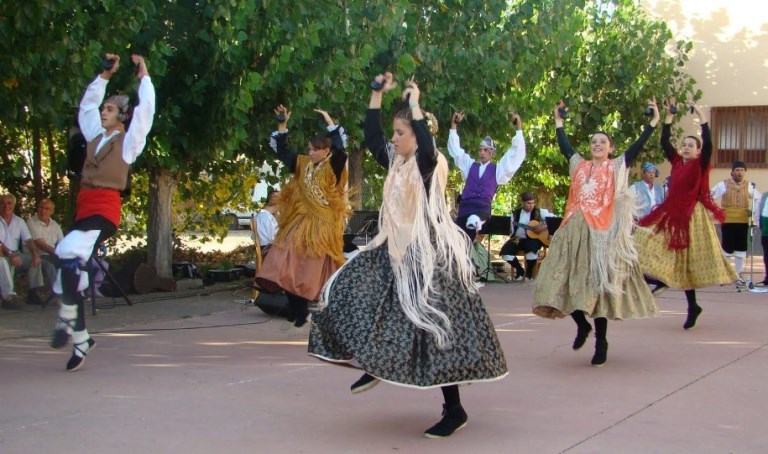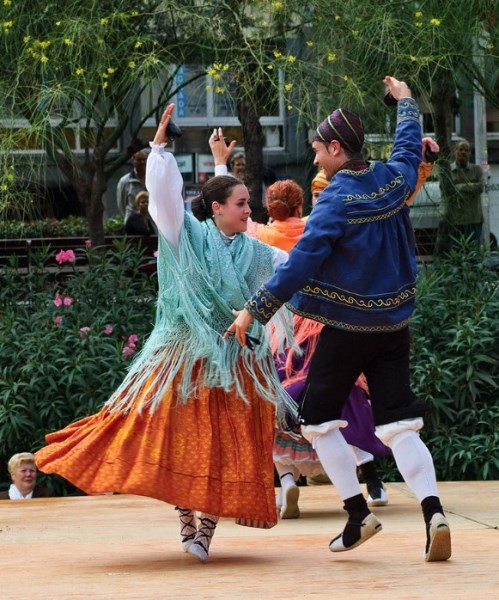With amazing dance styles that are still performed and loved everywhere around the world, like the Zapateado, the Flamenco, and the Paso Doble, Spain is a land that’s legendary for its terpsichorean culture.
Today, we’ll show you another wonder from Spain: the Jota dance. This is a traditional folk dance performed for centuries in Spain and other Spanish-speaking countries.
Known for its lively and energetic rhythm, although it’s been around for centuries, the Jota dance still has clubs, studios, and competitions dedicated to it today!
But when exactly was this dance created, and how has it evolved over time?
That’s what we will explore in today’s article: the rich history of the Jota dance, its earliest known origins, and its development and transformation over the decades.
Table of Contents
What Is The Jota Dance?
The Jota dance, like many other Spanish dances, is characterized by its fast and lively rhythm.
According to musicologists, the Jota dance steps are often compared to that of the waltz. It’s got the same combination of intricate footwork and spins.
However, while the waltz is primarily a partner dance, the Jota can both be danced with a partner or solo.
But the greatest highlight of the Jota dance must definitely be the music.
The dance is often accompanied by a live band playing traditional Jota music, typically in ¾ or sometimes 6/8 rhythm.
The musicians play an assortment of both classical and traditional instruments, ranging from the guitars and lutes to the dulzaina (a Spanish double-reed oboe), bandurrias (a kind of plucked chordophone), and more.
You’ll typically see Jota performances at special, joyous events in the community like festivals and weddings. It’s a very important part of many places in Spain.
Jota Dance Origin & History
If you’ve been reading our series on folk dances for a while, you’ll know that the origins of folk dances tend to be very foggy.
The same thing applies to the Jota dance. There aren’t many historical documents or exact records that pinpoint who, where, and when the Jota came into being.
However, most records showed that the Jota dance’s origin could be traced as far back as the 18th century in the Aragon region, southeast of Spain.
The dance was initially a fertility dance performed by farmers and laborers to celebrate the harvests and pray for good crops in the future.
Over time, the Jota dance spread to other regions of Spain. By the 19th century, most historians recorded that its popularity had “peaked.”
The Jota dance had become a popular form of entertainment in urban areas and had begun incorporating more intricate steps and movements.
And we got to today, where the Jota dance continues to be an important part of Spanish cultural heritage and national identity. You’ll still find the dance performed at many festivals, weddings, and cultural celebrations throughout the country.
But not just in Spain, the popularity of the Jota dance has also spread to many other countries, too, which include Mexico, the Philippines, and parts of South America.
In all of these countries, you’ll find variations of the Jota dance adapted and performed as a local dance!
Check more: Who Invented The Robot Dance?
Different Variations Of Jota Dance
There are many different variations of the Jota dance around the world. Let’s talk about a few.
Aragonese Jota
The Aragonese Jota is the original form of the dance. In the region and in Aragonese folklore, the Jota is widely recognized as a symbol of the people and the culture here.
The first expression of the Jota dance was said to have come to being here in Aragon around the 18th century, peaking in popularity in the 19th century.
Over time, the dance has undergone various adaptations and changes as the complexity of the dance steps and singing style evolved.
Nonetheless, it still exists today in the form of heavily choreographed versions created for zarzuelas (Spanish lyric-dramatic plays), movies, contests, festivals, and other forms of entertainment.
If you want to find the Aragonese Jota performed in its pure form, you can still find many performances in regions like Alcañiz, Andorra, Albalate, and Zaragoza.
Philippine Jota
During the Spanish colonial period in the Philippines, the Spaniards brought the Jota over.
Here, the locals adapted the dance and turned it into one of their own dances. Today, that dance is now simply known as the “Philippine Jota.”
This dance is often done at social gatherings such as weddings, parties, and baptisms.
Over time, besides the original elements and steps of the Aragonese Jota, the Filipinos adapted a few aspects of Filipino dance steps and music into it, too.
Variations of the jota differ from region to region. One such example is the Jota Paragua, which originated in Palawan’s old capital, the Cuyo Islands. It has a very clear Castilian influence.
The zapateados (footwork), cubrados (curved arms), and Sevillana-style dresses are clearly Spanish in origin. Female dancers will wave their mantón, or shawls, around as they dance on-stage. The male dancers will keep pace with their bamboo castanets.
Other examples of Philippine jotas include the Jota Manileña from Manila, Jota Caviteña from Cavite, and Jota Moncadeña from Tarlac.
Check more traditional Philippine dance: Tinikling Dance
Californios Jota
The jota was introduced to Alta California (modern-day California in the US) during the Spanish period. It quickly became a significant component of the Californios’ dance repertoire.
Manuel Y. Ferrer, a renowned guitarist born to Spanish parents in Baja California (today a part of Mexico), learned the guitar from a Franciscan friar in Santa Barbara.
He later arranged jotas for the guitar while pursuing his career in the San Francisco Bay Area.
In the early 20th century, Italian American musicians in San Francisco, playing in the ballo liscio style, also incorporated the jota into their repertoire.
Sidney Robertson Cowell – a famous American folk song collector – managed to preserve two jotas for the WPA California Folk Music Project in 1939.
The recordings were played by bands of various national origins, including Mexican American and Portuguese American.
Read more: Bharatanatyam Dance: History, Steps, Costume, Dancers & More
Jota Dance Costumes
Jota dance costumes vary depending on the region and the specific dance style. But generally speaking, people doing the Jota will all wear costumes that have Spanish roots.
Women Jota Dance’s Costume
Women wear colorful, traditional Spanish dresses with ruffles, lace, and floral decorations.
They may also wear a mantón, a large shawl made of silk or lace, which they can use to accentuate their movements during the dance (this garment is particularly popular in the Philippine Jota.)
Men Jota Dance’s Costume
Men typically wear traditional Spanish attire, including a jacket, vest, and trousers. They may also wear a sombrero or a beret.
In the Philippines, where the jota has been adapted to incorporate Filipino elements, the costumes may also include Filipino elements such as the barong Tagalog for men and the terno or baro’t saya for women.
Jota Dance Music & Instruments
We’ve talked briefly about the music used in the Jota dance earlier, but let’s dive a bit deeper than that!
Jota dance music typically features a lively and upbeat rhythm with a fast tempo. This lends the dance the ferocious spirit that it’s known for!
Behind every performance is typically a live ensemble of traditional Spanish string instruments, including the guitar, mandolin, and bandurria.

Another essential instrument used in Jota dance music is the castanets. These small, wooden, or bamboo instruments are held in the hands and used to create rhythmic clapping sounds accompanying the music.
The castanets are an important part of the Jota dance. Because they set the rhythm and allow the dancers to “vibe” better to the music.
The music may include traditional Filipino instruments in the Philippines, where the jota has been adapted to incorporate Filipino elements.
The Largest Jota Dance
Remember how we said the Jota dance is best enjoyed as a group dance?
On April 1, 2017, the Asociacion de Autismo de Segovia and Ayuntamiento de Segovia in Segovia, Castilla y León, Spain, organized an attempt to set a record for the largest Jota dance.
This event drew the attention of hundreds of people. And by the time the dance took place, a record-breaking 727 dancers were participating.
The event was aimed at raising awareness about autism and took place in front of Segovia’s iconic aqueduct, which was illuminated in blue to mark World Autism Awareness Day.
Final Words
The Jota dance is a beautiful dance that, fortunately, has withstood the test of time and is still being performed widely today. And not just in Spain – where it hailed from the Aragon – but also in many different countries around the world!
If you love Spanish dances of all forms, we highly recommend giving them a shot.
Find your local dance studio and ask around if there are any courses on the Jota available, and take on them. We guarantee that you’ll have a great time learning this amazing dance!

